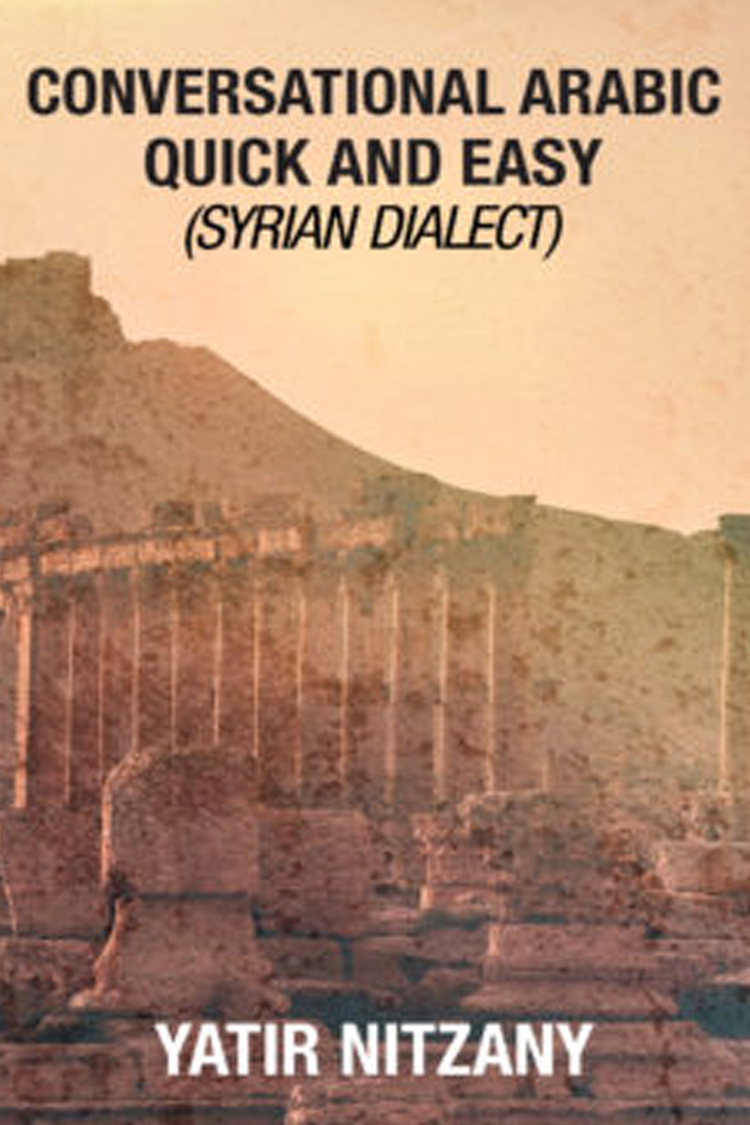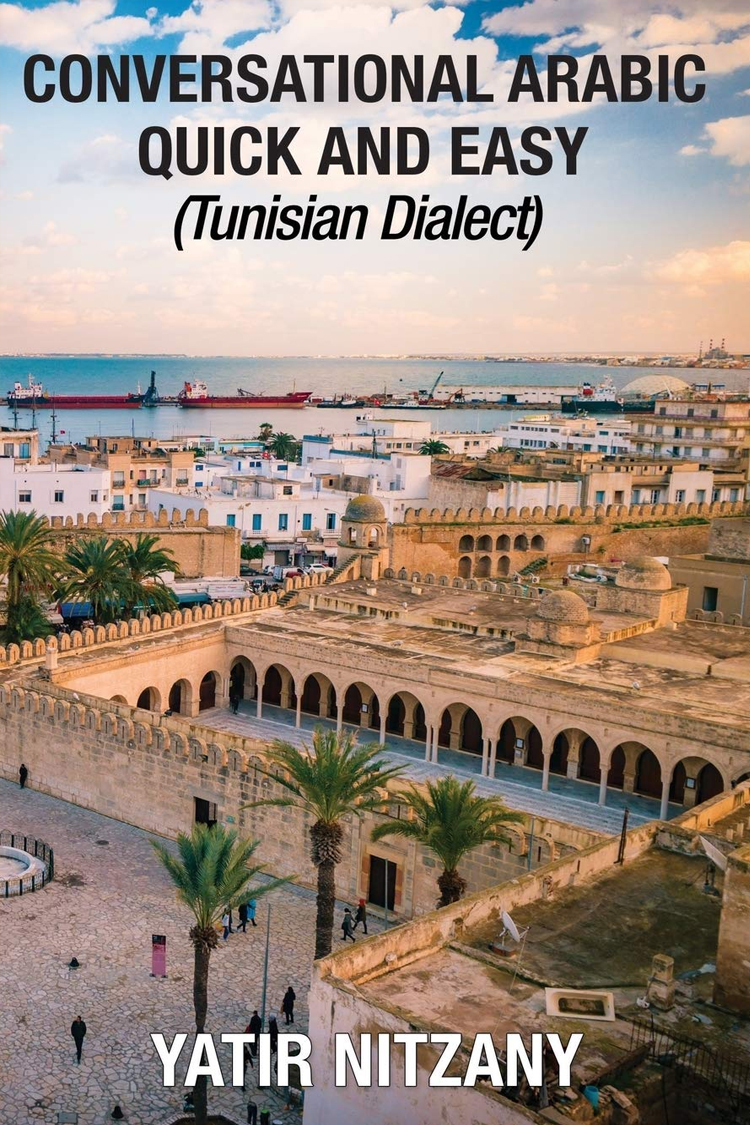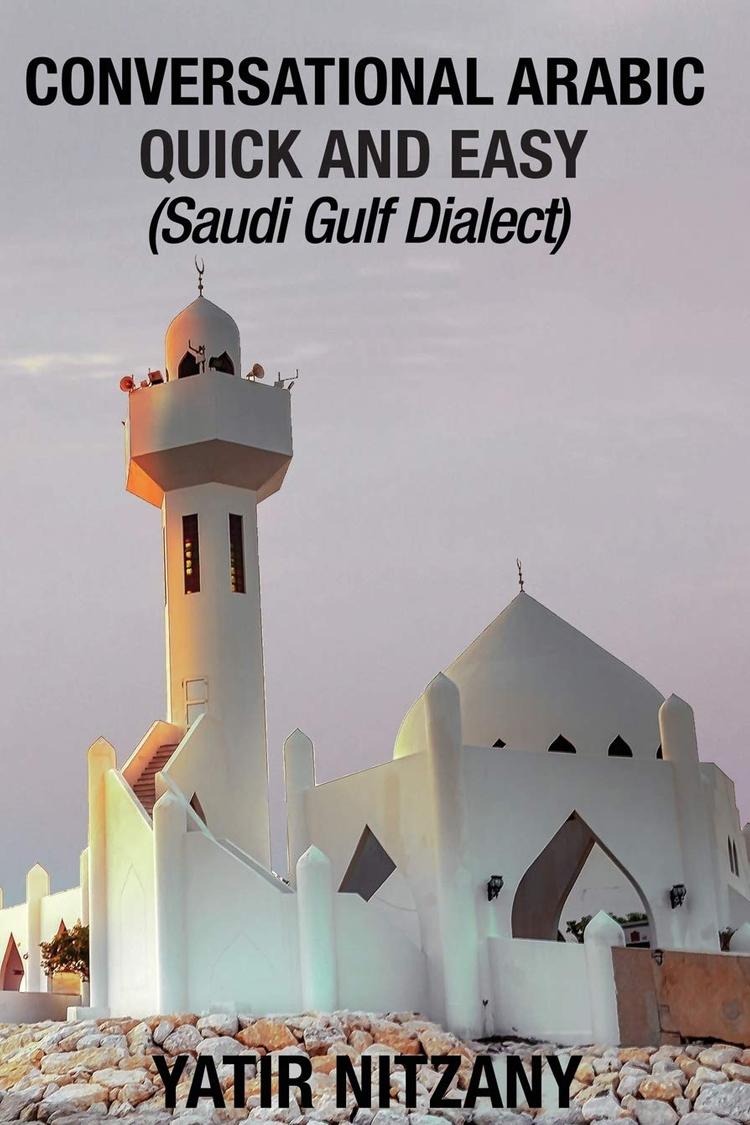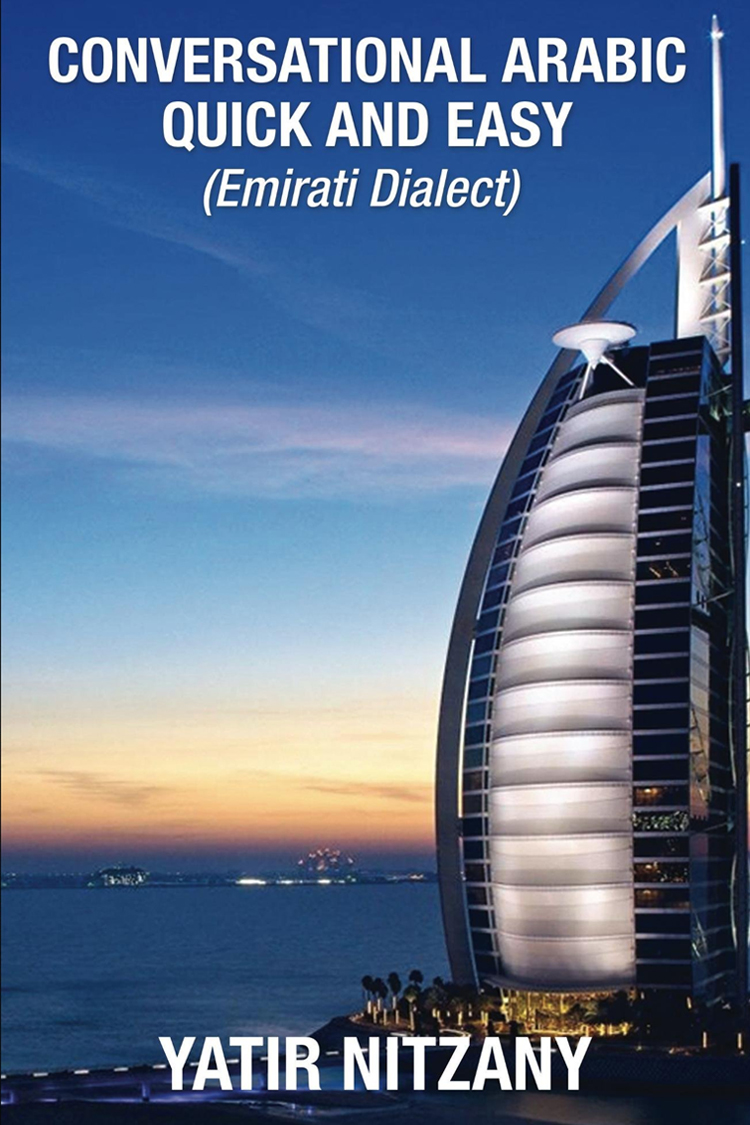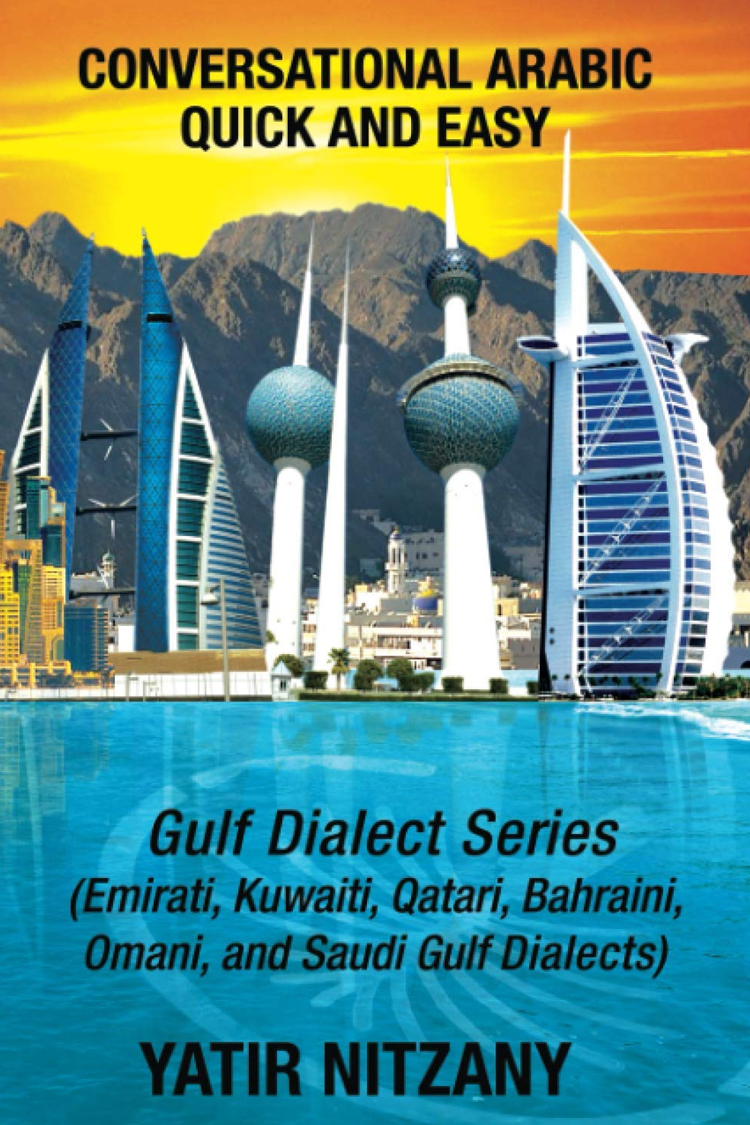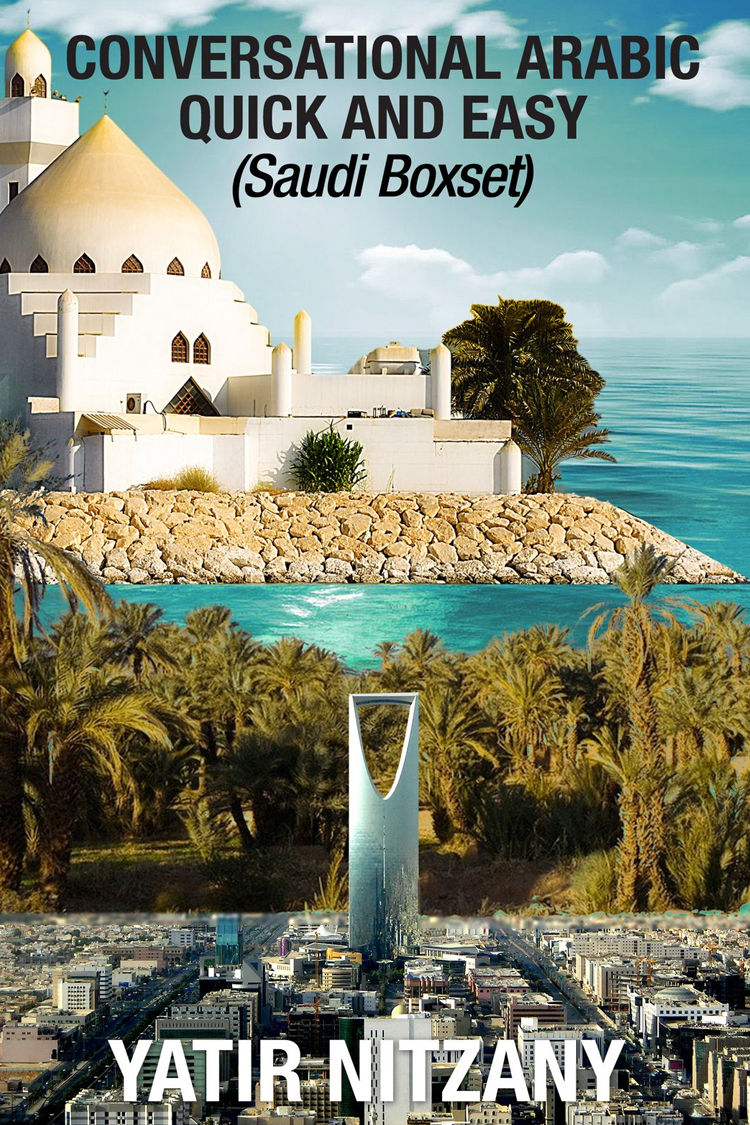MY BOOKSHELF
CONVERSATIONAL ARABIC
Classical Arabic Quick and Easy
Although the official language of Egypt is Modern Standard Arabic, its people speak Egyptian Arabic. Written in the Arabic alphabet, the language is spoken by over 77 million people throughout the world, though mostly concentrated in Egypt.
Conversational Lebanese Quick and Easy
Lebanese Arabic is a Levantine dialect. The term “Levantine” derives from “The Levant,” which is the geographical region of the eastern Mediterranean that encompasses Cyprus, Lebanon, Syria, Israel, Palestine, Jordan, and the Hatay Province of southern Turkey.
Conversational Palestinian Quick and Easy
Palestinian Arabic, like many other Middle Eastern languages, is a dialect of the more official Modern Standard Arabic language. However, though various countries have their own dialects, Palestinian Arabic is most similar to Syrian and Lebanese Arabic and is considered a Levantine dialect, named after the Levant region that encompasses Jordan, Syria, Israel, Palestine, Lebanon, Cyprus, and Turkey’s Hatay province.
CONVERSATIONAL ARABIC QUICK AND EASY: Jordanian Dialect
The official language of the Hashemite Kingdom of Jordan is MSA (Modern Standard Arabic). In Jordan, MSA is taught in schools and used in newspapers and formal TV programs. However, the everyday spoken language is the Jordanian dialect, which isn’t considered an official language but, rather, is colloquial.
CONVERSATIONAL ARABIC QUICK AND EASY: Syrian Dialect
The Levant is a historical, broad geographic region of the eastern Mediterranean that includes Cyprus, Jordan, Lebanon, Palestine, Israel, and Syria. Arabic speakers in this area have their own distinctive dialect of Modern Standard Arabic, Levantine Arabic, also referred to as Mediterranean Arabic, which is closer to Egyptian Arabic than it is to Gulf Arabic.
Conversational Egyptian Arabic Quick and Easy
Although the official language of Egypt is Modern Standard Arabic, its people speak Egyptian Arabic. Written in the Arabic alphabet, the language is spoken by over 77 million people throughout the world, though mostly concentrated in Egypt.
Conversational Morroccan Quick and Easy
In Morocco, the most spoken language in daily life is Moroccan Darija or Moroccan Arabic, which is spoken by some 19 million people in the country. Modern Standard Arabic is used for official communications by the government and other public bodies but is not spoken socially. Moroccan Darija has a strong presence on television, social media, entertainment, cinema, and commercial advertising.
Conversational Tunisian Quick and Easy
Tunisia is a North African country bordering the Mediterranean Sea and the Sahara Desert and has an estimated 11.4 million inhabitants. In Tunisia, a set of dialects of Maghrebi Arabic are spoken by eleven million speakers and are referred to as Tounsi, Tunisian or Derja that means “everyday language.” This distinguishes the languages from the official Modern Standard Arabic (MSA).
Conversational Algerian Quick and Easy
Out of the estimated forty million people who live in Algeria (2016), around 75% to 80% speak Algerian Arabic, or Algerian (known as Darja or Dziria) as their first language, and another 20% speak it as a second language. Algerian is a language derived from a variety of Arabic languages spoken in northern Algeria.
Conversational Iraqi Quick and Easy
Iraqi Arabic is the dialect of Arabic that is used in Iraq. Iraqi Arabic is quite similar in spelling and pronunciation to its neighboring country’s form of Arabic, called Kuwaiti Arabic. This is one of the most difficult and complex varieties of Arabic, at a similar level to other hard Arabic dialects such as Hijazi and Yemeni.
CONVERSATIONAL ARABIC QUICK AND EASY: Saudi Hijazi Dialect
Like every other Middle Eastern nation, the official language of Saudi Arabia is Modern Standard Arabic, which is taught as a second language to most citizens of the country. Each country may have its own dialects, but MSA unifies them all and helps them communicate with each other almost flawlessly. Saudi Arabia houses three dialects; these are the mother tongues for most citizens.
CONVERSATIONAL ARABIC QUICK AND EASY: Saudi Najdi Dialect
The current population of Saudi Arabia is estimated at 32.94 million (2017). As with most Arabic countries, Modern Standard Arabic (MSA) is the formal version of the language but mainly used in newspapers, books, and the media. It is taught in schools as a secondary language.
CONVERSATIONAL ARABIC QUICK AND EASY: Saudi Gulf Dialect
The population of Saudi Arabia is estimated at 33 million people. As with other Arabic countries, Modern Standard Arabic is the standard national language spoken by all. It is a formal language mainly used for government communications and media.
CONVERSATIONAL ARABIC QUICK AND EASY: Emirati Dialect
If your desire is to learn complicated grammatical rules or to speak perfectly proper and precise Arabic, this book is not for you. However, if you need to actually hold a conversation while on a trip to an Arab speaking country, to impress that certain someone, or to be able to speak with your grandfather or grandmother as soon as possible, then the Nitzany Method is what you have been looking for.
CONVERSATIONAL ARABIC QUICK AND EASY: Kuwaiti Dialect
As in many other Arabic countries, Modern Standard Arabic (MSA) is taught alongside the local dialects in Kuwait. Modern Standard Arabic is the official language of Kuwait, but Kuwaiti Arabic is the urban spoken vernacular used in everyday life in the country. There are differences between the dialects spoken in urban areas and those spoken in rural areas.
CONVERSATIONAL ARABIC QUICK AND EASY: Omani Dialect
The current population of the Sultanate of Oman is estimated to be 4,720,483. The country is on the southeastern coast of the Arabian Peninsula. Oman is at the mouth of the Persian Gulf and shares land borders with the United Arab Emirates to the northwest, Saudi Arabia to the west, and Yemen to the southwest. It shares marine borders with Iran and Pakistan. The coast is formed by the Arabian Sea on the southeast and the Gulf of Oman on the northeast.
CONVERSATIONAL ARABIC QUICK AND EASY: Bahraini Dialect
The official language in Bahrain, similar to most Arabic-speaking countries, is Literary Arabic. This is a mixture of Classic Arabic and Modern Standard Arabic mixed with local dialects.
CONVERSATIONAL ARABIC QUICK AND EASY: Qatari Dialect
The population of Qatar is 2.6 million, and there has been a great influx of English along with globalization and the expatriates who live there.
Arabic is the official language of Qatar, and Qatari Arabic is the country’s local dialect. Gulf Arabic or Khaliji is also spoken in Qatar, as well as Modern Standard Arabic, which is the official language of the government and of printed materials. Gulf Arabic is also spoken in Bahrain, Kuwait, Saudi Arabia, and the United Arab Emirates.
Conversational Libyan Quick and Easy
Have you always wanted to learn how to speak the Libyan Arabic dialect but simply didn’t have the time?
Well if so, then, look no further. You will hold in your hands one of the most advanced and revolutionary methods that was ever designed for quickly becoming conversational in a language. In creating this time-saving program, master linguist Yatir Nitzany spent years examining the twenty-seven most common languages in the world and distilling from them the three hundred and fifty words that are most likely to be used in real conversations.
CONVERSATIONAL ARABIC QUICK AND EASY: Yemeni Dialect
The official language of Yemen, for the estimated twenty-seven million people living there, is Modern Standard Arabic, but Yemeni Arabic, which is a cluster of varieties spoken in the country and in southwestern Saudi Arabia, Somalia, and Djibouti, is unofficially used for daily communications. There are an estimated fifteen million people that use Yemeni Arabic as their primary language.
CONVERSATIONAL ARABIC QUICK AND EASY: Sudanese Arabic Dialect
Sudanese Arabic is native to Sudan and some parts of Eritrea, with about 29.4 million native speakers. The number of speakers worldwide is estimated at 31,854,000. It is spoken in the Anseba Region, Gash-Barka Region, and the Sudan.
CONVERSATIONAL ARABIC QUICK AND EASY The Spoken Arabic of The State of Israel
The two official languages of the citizens of the State of Israel are Hebrew and Arabic. English is, however, used as a second language by the majority of the Israeli population. As Arabic is the second official language, it is used extensively in logos, road signs, instruction labels, etc., as well as in messages that are posted or published by the government and product labels. The use of Arabic increased after Israeli Supreme Court rulings in the 1990s that eased the rights of the Arab minority in Israel.




